PRODUCTS
Technology / Product Information
Technology / product information
14hits
Narrow by Industry Category
Narrow by material Category
Narrow by accuracy
Narrow by lot number
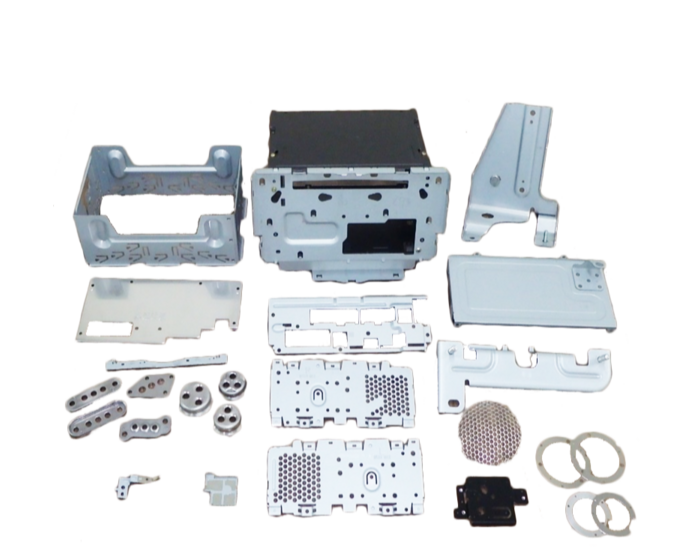
Precision Metal Stamping in Thailand | 10–300 Tons for Medical & High-Precision Components
✨ Key Takeaways • 61 stamping machines from 10–300 tons for Medical & Precision applications • 24 Progressive presses + 16 Robot Press units for stable ±as-designed accuracy • Supports thin & complex parts: Chassis, Holder, Frame, Eyelet • Quality control with CMM & IM under ISO 13485 • Suitable for clean, stable, medical-grade metal components ーーーーーーーーーーーーーーーーーーーーーーーーーーー ⚠️ Common Issues in Precision Stamping Many factories face inconsistent hole dimensions, spring-back deformation, or unstable Progressive die performance during mass production. These issues often increase reject rates and overall costs, typically caused by incorrect tonnage selection, unstable press settings, or machines not suitable for high-volume continuous runs. 🔧 Stamping Capability of SIMA SIMA operates 61 stamping machines from 10–300 tons, including: • Single Shot (10–200t): 21 units • Progressive Press (25–300t): 24 units • Robot Press Line: 3 lines, 16 units • 80t × 4 • 150t × 6 • 150t × 6 This capability supports thin-wall parts, deep-draw components, and low cycle-time production with stable robot handling. 🩺 Capability for Medical & Precision Components The wide tonnage range allows SIMA to stamp small components as well as large chassis and frame structures while controlling material deformation. Key benefits include: • Stable dimensional consistency across lots • High uniformity even in multi-stage Progressive dies • Suitable for thin-steel, high-hardness materials, and stainless steel Supported parts: • Chassis • Holder / Bracket • Eyelet (Deep Draw) • Thin-frame structures 🔍 Quality Control under ISO 13485 To support Medical Device requirements, SIMA operates: • CMM • IM • 2 dedicated cleaning machines 📌 Suitable Applications • Medical metal parts requiring high cleanliness • Precision stamping for Sensor Housings • Small deep-draw eyelets • Multi-hole chassis • High-flatness frame components ⚙️ Comparison with General Stamping Factories • Better for High-Mix + Tight-Tolerance production • Robot Line reduces human error • Cleaning + QC systems meet Medical grade • 24 Progressive presses support continuous high-volume production 🤝 Trust (EEAT) “According to Mr. Waranon, Expert Engineer at SIMA Technology, all stamping processes are controlled under ISO 13485 and verified using CMM and IM systems to ensure every part meets customer requirements.” [1][2] 📞 Contact for More Information For more details on SIMA’s Precision Metal Stamping process, please contact our Sales team or download the technical document below. ーーーーーーーーーーーーーーーーーーーーーーーーーーー ❓ FAQ Q1: Can SIMA stamp high-hardness stainless steel? Yes. Proper tonnage selection enables stamping of high-hardness materials (10–300t). Q2: Can SIMA support Clean-Requirement Medical Parts? Yes. Supported by cleaning systems and ISO 13485 inspection. Q3: How deep can SIMA perform Deep Draw? Suitable for Eyelets and deep-drawn shapes using Robot Press and Single Shot. --- 🔗 Related Knowledge • Basic Knowledge: https://prime.nc-net.com/98740/en/product/detail/223223 • Advance Knowledge: https://prime.nc-net.com/98740/en/product_others/detail_goods/27707 --- 📚 Glossary • Progressive Press – Multi-stage stamping process in one die • Robot Press Line – Automated stamping using industrial robots • Deep Draw – Forming metal into deep shapes • CMM – High-precision coordinate measuring machine • IM – Optical image-based measurement Reference [1] Process Capability & QC Report – SIMA Technology (2025) — Internal Validation [2] ISO 13485: Medical Device QMS — International Organization for Standardization — https://www.iso.org #PrecisionPress #MetalStampingThailand #SIMAtechnology #MedicalMetalParts #ProgressivePress #RobotPressLine #ISO13485 #HighPrecisionStamping #DeepDraw #MuramotoGroup Updated: 2025-11-13
Metal Press & Precision Stamping in Thailand|From Small-Lot to Mass Production
SIMA Technology provides high-precision metal stamping services with 61 press machines (10–300 tons) covering Medical Device parts, Electronics mechanical components, and industrial metal parts. Our factory is located in Nakhon Ratchasima, Thailand, with capabilities suitable for prototype builds up to high-volume mass production. 🔷 Precision Stamping Service in Thailand (SIMA Technology Co., Ltd.) Our Pak Chong – Pak Thong Chai facility offers precision metal stamping for customers who require high dimensional accuracy. We support production from Prototype / Pilot Run to Mass Production with 61 presses: - Progressive Press - Single Press - Robot Press Lines (3 Lines) We handle complex parts such as Chassis, Holder, Eyelet (Deep Draw), and thin structural Frames. To ensure cleanliness and stability, we operate Cleaning Machines and inspection systems including CMM and IM inside the factory. 🔷 Capabilities - Multiple press types: Progressive / Single Press / Robotic Press Line - Auxiliary equipment: Cleaning Machines for contamination control - Flexible production: Prototype → Mass Production - High stability with multi-stage dies and robot material handling 🔷 Specifications - Press Machines: 61 Units - Press Capacity: 10–300 Tons - Technologies: Progressive, Single Press, Robotic Lines - Auxiliary Equipment: Cleaning Machines, QC Systems (CMM / IM) 🔷 Applications - Medical Components: Metal parts for medical devices - Electronics Mechanical Parts: Chassis, Holder, Frame - Precision Industrial Parts: Thin, multi-stage stamped components - Automotive Components (selected items): Audio pressed parts - Custom Parts: Build-to-print components for OEM customers 🔷 Why SIMA Technology? - Located in Nakhon Ratchasima, Thailand - Part of Muramoto / METCO Group Network - Supports domestic and export production - Full quality certification system: - ISO 9001:2015 - ISO 14001:2015 - IATF 16949:2016 - ISO/EN 13485:2016 (Medical Device) - Medical Device Manufacturer License (FDA Thailand) 📩 For more details, please contact our Sales team or download the technical document below. ーーーーーーーーーーーーーーーーーーーーーー ❓ FAQ Q1: Can SIMA support both small-lot and mass production? Yes. We handle Prototype, Pilot Run, and Mass Production with 61 presses (10–300 tons) across Progressive, Single, and Robot Lines. Q2: What materials can SIMA process? Stainless steel, cold-rolled steel, aluminum, and thin-gauge metals for Medical and Precision components. Q3: Is SIMA part of the METCO Group? Yes. SIMA belongs to the Muramoto / METCO Group Network, focusing on Medical & Precision parts (different from METCO electronics factories). --- 【📚 Glossary】 - High-Speed Press: High-speed press for large-volume parts - Progressive Press: Multi-step continuous stamping - Robotic Line: Automated robotic stamping/handling line - Spot Welding: Electrical resistance spot welding #PrecisionStamping #MetalPressingThailand #HighSpeedPress #ProgressivePress #RoboticLine #StampingService #AutomotiveParts #ElectronicsComponents #IndustrialParts #SIMAtechnology #NakhonRatchasima #ThailandFactory Updated: 2025-11-13
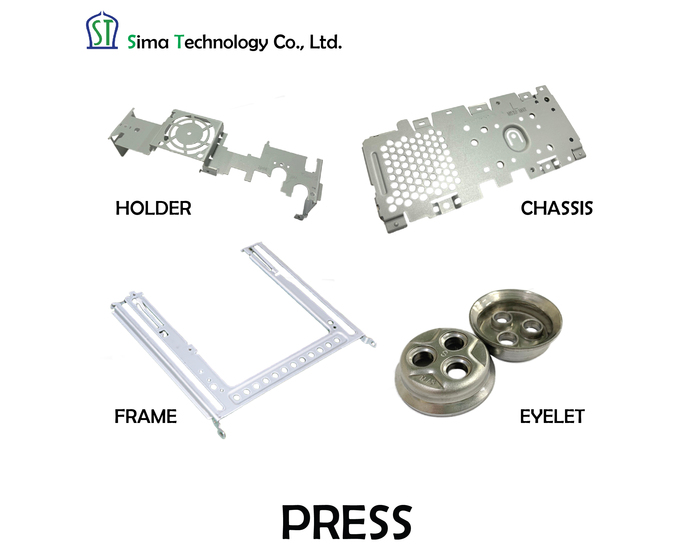
Precision Stamping Service Thailand | Small to Large-Scale Production Thailand
SIMA Technology provides high-precision stamped component manufacturing in Thailand with 65 press machines (10–300 tons), supporting automotive, electronics, and industrial sectors. 🔷 High-Precision Stamped Component Manufacturing in Thailand SIMA Technology Co., Ltd., located in Nakhon Ratchasima, Thailand, offers precision stamped component manufacturing services with 65 press machines ranging from 10 to 300 tons. Our facilities combine high-speed presses, progressive presses, single presses, and robotic lines with comprehensive auxiliary equipment, enabling flexible production from low-volume trials to mass production runs. 🔷 Features ‐ Versatile Press Options: High-speed, progressive, single presses, and robotic lines ensure efficient and precise manufacturing. ‐ Auxiliary Equipment: Cleaning machines, tapping machines, and spot welding machines enhance product quality and streamline workflows. ‐ Flexible Production: Capable of handling both small-batch prototypes and large-scale production efficiently. ‐ High Precision: Advanced technology supports complex geometries and high dimensional accuracy. 🔷 Specifications ‐ Press Machines: 65 units ‐ Press Capacity: 10–300 tons ‐ Technologies: High-speed press, progressive press, single press, robotic lines ‐ Auxiliary Equipment: Cleaning, tapping, and spot welding machines 🔷 Applications ‐ Automotive Components: High-precision stamped parts for vehicles ‐ Electronics & Home Appliances: Reliable stamped components for electronic devices ‐ Industrial Machinery: Precision parts for equipment and machinery ‐ Custom Parts: Tailored stamping solutions for specialized applications 🔷 Strengths of SIMA Technology Co., Ltd. ‐ Headquartered in Nakhon Ratchasima, Thailand ‐ Supported by METCO Factory 1 (Bangkok), Factory 2 & 3 (Samut Prakan) ‐ ISO-based quality assurance for stamped component manufacturing ‐ Proven track record in domestic and export markets 📩 For more details, please contact us below or download the product PDF. ーーーーーーーーーーーーーーーーーーーーーーーーー 【Glossary】 ‐ Stamping (Pressing): Process of shaping materials using a press machine ‐ Progressive Press: Multi-stage stamping that produces complex parts efficiently ‐ Robotic Line: Automated production line for high efficiency and consistency ‐ Auxiliary Equipment: Machines that support cleaning, tapping, and welding in production #StampingServiceThailand #PrecisionPressing #MetalStamping #AutomotiveComponents #ElectronicsParts #IndustrialStamping #MassProduction #SIMAtechnology #ThailandManufacturer (Updated: 2025-09-23)
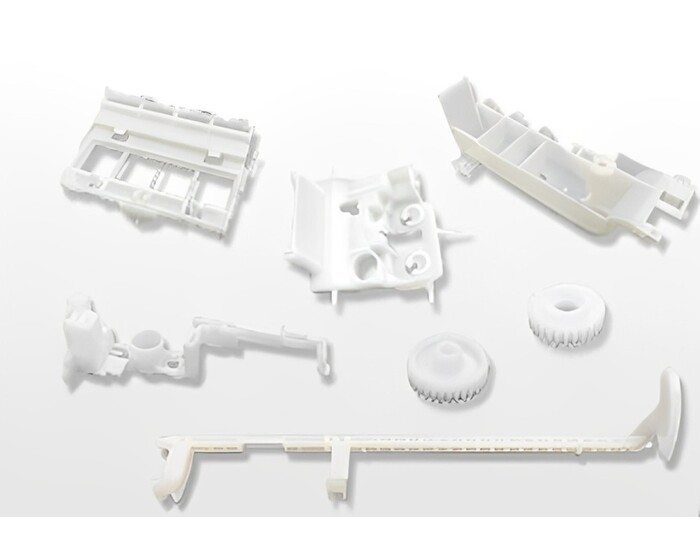
Plastic Injection Molding Service|High-Precision Molding Factory in Nakhon Ratchasima, Thailand
SIMA Technology provides precision plastic injection molding with 23 injection machines (30 / 50 / 75 / 130 tons). We specialize in Printer Mechanical Components, including Lever, Holder, Guide, Slider, and Spur Gear. Our production facility is located in Nakhon Ratchasima, Thailand. 🔷 Plastic Injection Molding for Printer Mechanical Parts (Thailand) SIMA TECHNOLOGY CO., LTD. offers plastic injection molding for parts requiring high dimensional accuracy and stability. With 23 injection machines ranging from 30–130 tons, we support applications in printer mechanisms that require consistent shape accuracy for Paper Feed and Cleaning Systems. Actual molded components include: - HOLDER / BOARD / CISS - LEVER (Paper / Return / Change) - GUIDE / TUBE / SUPPLY / INK - SLIDER / CAP - SPUR GEAR (Cleaner / Pump) Our engineering team supports machine setting, temperature/pressure control, and inspection using IM System to maintain stable geometry for downstream assembly. 🔷 Key Capabilities - 23 Injection Molding Machines: 30 / 50 / 75 / 130 tons - Supports engineering plastics for printer mechanisms: - ABS - PC - POM - PBT - Suitable for high-precision components: - Lever / Guide / Holder / Slider - Spur Gear (Cleaner / Pump) - Quality controlled under Muramoto / METCO Group practices - Capable of consistent long-run molding for mass production 🔷 Specifications - Machines: 23 Units - Tonnage: 30 / 50 / 75 / 130 tons - Materials: ABS, PC, POM, PBT - Product Examples: - Holder / Board / CISS - Lever (Paper / Return / Change) - Guide, Tube (Supply / Ink) - Slider, Cap - Spur Gear (Cleaner / Pump) 🔷 Applications - Printer mechanical components - Precision parts for Paper Feed / Cleaning / Pump Systems - Plastic parts requiring shape stability for internal assembly 🔷 Advantages of SIMA Technology Co., Ltd. - Located in Nakhon Ratchasima, Thailand - Member of Muramoto / METCO Group - Produces for global printer manufacturers - Quality systems aligned with industry standards: - ISO 9001 - ISO 14001 - IATF 16949 📩 For more details, please contact our Sales team or download the technical document below. ーーーーーーーーーーーーーーーーーーーーーーー ❓ FAQ Q1: What materials can SIMA mold? ABS, PC, POM, PBT – materials commonly used for printer mechanical components. Q2: Can SIMA support both small and large production volumes? Yes. With 23 machines (30–130 tons), we support Prototype → Mass Production. Q3: What level of Spur Gear molding can SIMA handle? We support small Spur Gears such as Cleaner Gears and Pump Gears, as used in printer mechanisms. --- 🔗 Related Knowledge • Knowledge Basic Introduction to Engineering Plastics|Which material fits your product? • Knowledge Advance Spur Gear Molding|Techniques for controlling precision in small plastic gears --- 【📚 Glossary】 - Injection Molding: Plastic forming process using mold injection - Medical Device Parts: Components used in medical device assembly - POM / ABS / PS / PE / PP: Common engineering plastics in molding #PlasticInjection #InjectionMolding #PrecisionMolding #PrinterComponents #MedicalDeviceParts #PlasticInjectionThailand #SIMAtechnology #NakhonRatchasima #ThailandFactory (Updated: 2025-09-23)
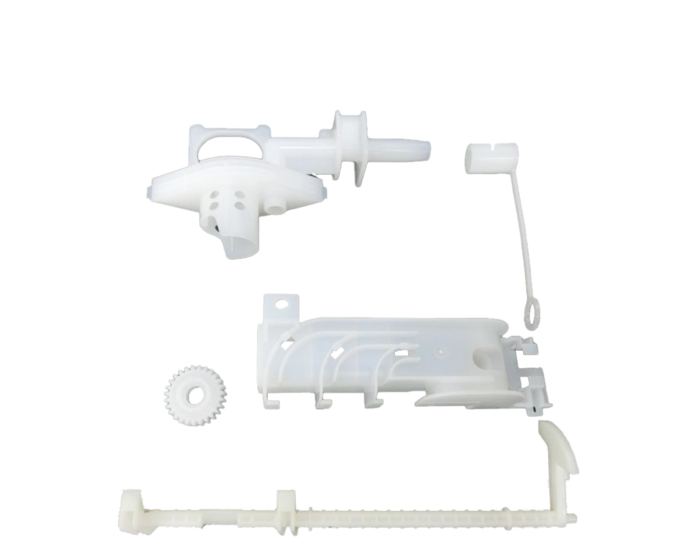
Plastic Injection Molding Thailand | Precision Parts for Printers & Medical Devices
SIMA Technology offers plastic injection molding in Thailand with advanced machines, producing precision printer parts and medical components. 🔷 High-Quality Plastic Injection Molding in Thailand SIMA Technology Co., Ltd., based in Nakhon Ratchasima, Thailand, provides precision plastic injection molding services with the capability to handle complex component designs. We specialize in printer parts and medical device components, ensuring high quality and reliability. As the only Muramoto Group base with in-house plating and anodizing, SIMA also supports integrated solutions for industries requiring both plastic and metal processing. With additional support from METCO Factory 1 (Bangkok), Factory 2 & 3 (Samut Prakan), we deliver comprehensive production and export services for global customers. 🔷 Features ‐ Precision Injection Molding Technology: Advanced molding lines to support complex geometries. ‐ Material Flexibility: POM, ABS, PS, PE, and PP for performance-driven applications. ‐ Strict Quality Control: ISO-based management systems ensuring consistent results. ‐ Custom Development: Tailored manufacturing solutions for specific design and function needs. 🔷 Specifications ‐ Materials Supported: POM, ABS, PS, PE, PP ‐ Applications: Printer components, medical device parts, custom industrial parts ‐ Injection Molding Machines: High-speed, advanced, single-line, robotic-integrated systems 🔷 Geographical Advantage ‐ Headquarters: Nakhon Ratchasima, Thailand ‐ Production Network: METCO Factory 1 (Bangkok), Factory 2 & 3 (Samut Prakan) ‐ Export Capability: Seamless integration with Muramoto Group for international delivery 📩 For more details, please contact us below or download the product PDF. ーーーーーーーーーーーーーーーーーーーーーーーーー 【Glossary】 ‐ Plastic Injection Molding: A process of forming plastic parts by injecting molten material into molds ‐ Precision Plastic Components: High-accuracy plastic parts requiring tight tolerances ‐ Medical Injection Molding: Plastic molding specialized for healthcare and medical device applications ‐ Integrated Production: Combined capability of molding, plating, and anodizing within one group #PlasticInjectionMoldingThailand #PrecisionPlasticParts #MedicalInjectionMolding #PrinterParts #InjectionMoldingSupplier #SIMAtechnology #ThailandManufacturer #PlasticComponents (Updated: 2025-09-23)
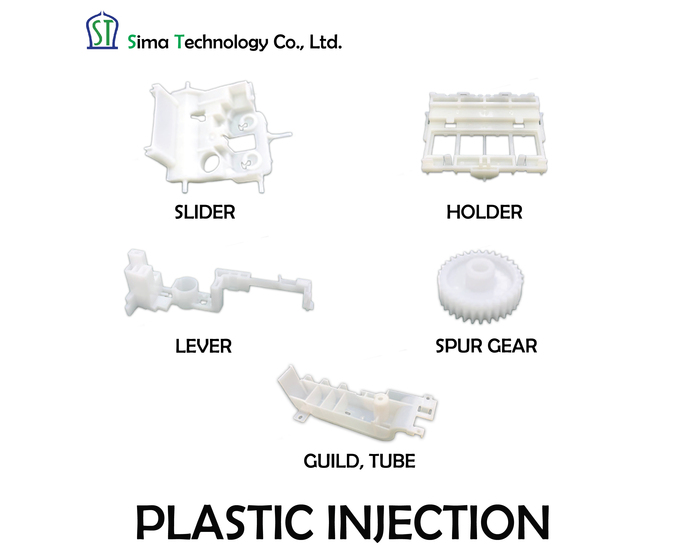
Plastic Injection Molding Supplier | PE/PP Precision Components in Thailand
SIMA Technology provides PE & PP injection molding in Thailand with 22 machines (30–130 tons), supplying precision parts for medical equipment and printers. 🔷 Injection Molding Services for PE & PP Materials SIMA Technology Co., Ltd., based in Nakhon Ratchasima, Thailand, provides precision plastic injection molding services with 22 machines ranging from 30 to 130 tons. We specialize in medical equipment components and printer parts, leveraging PE and PP injection molding technology for durable, accurate, and cost-effective solutions. Our strict quality control system guarantees consistent production that meets global standards. 🔷 Features ‐ Wide Material Compatibility: Supports POM, ABS, PS, PE, and PP for versatile applications. ‐ Precision Injection Molding: Capable of producing complex designs with tight tolerances. ‐ Industry Expertise: Proven track record in medical plastic molding and printer components. ‐ Versatile Machinery: 22 injection molding machines for projects ranging from small runs to large-scale production. ‐ Strict Quality Control: ISO-based systems ensure high-quality, consistent output. 🔷 Specifications ‐ Machines: 22 units ‐ Capacity: 30–130 tons ‐ Materials: POM, ABS, PS, PE, PP ‐ Products: Medical equipment parts, printer parts, custom industrial parts 🔷 Applications ‐ Medical Equipment: Internal and external components for medical devices ‐ Printer Components: Precision structures and moving parts for printing devices ‐ Custom Plastic Parts: Tailored solutions for various industrial applications 🔷 Strengths of SIMA Technology Co., Ltd. Located in Nakhon Ratchasima, Thailand, SIMA is supported by a strong network of METCO Factory 1 (Bangkok), Factory 2, and Factory 3 (Samut Prakan). This ensures fast production lead times, export readiness, and reliable delivery to customers worldwide. 📩 For more details, please contact us below or download the product PDF. ーーーーーーーーーーーーーーーーーーーーーーーーー 【Glossary】 ‐ PE (Polyethylene): Lightweight, durable plastic often used in medical disposables. ‐ PP (Polypropylene): Heat-resistant, versatile plastic used in medical and electronic components. ‐ Injection Molding: A process of shaping plastic parts by injecting molten material into molds. ‐ Precision Plastic Parts: Components requiring tight tolerances and consistent quality. #PEInjectionMoldingThailand #PPInjectionMolding #MedicalPlasticMolding #PrinterPlasticParts #PlasticInjectionSupplier #SIMAtechnology #ThailandManufacturer #PrecisionPlasticParts (Updated: 2025-09-23)
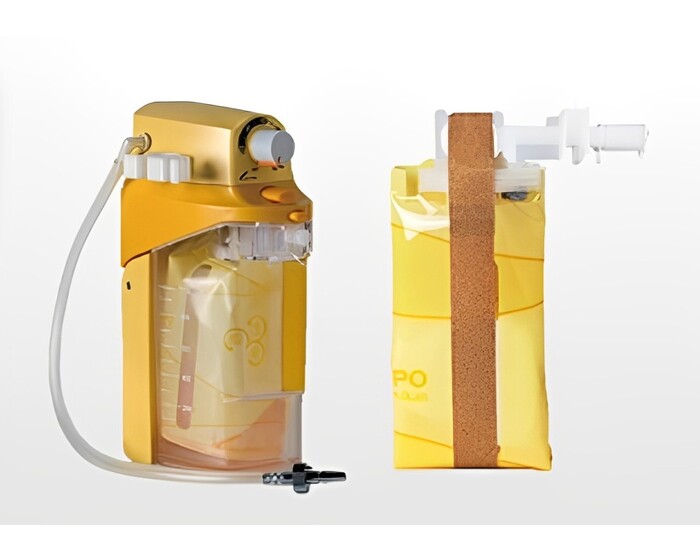
Medical Suction Liners & Canisters | Safe Disposable & Reusable Fluid Collection
High-quality medical suction liners and reusable canisters for safe fluid collection in hospitals and clinics. Prevents leakage, ensures hygiene, and supports efficient patient care. 🔷 Overview SIMA Technology Co., Ltd., located in Nakhon Ratchasima, Thailand, specializes in medical fluid collection systems, including disposable suction liners and reusable rigid canisters. These products are designed for safe and hygienic management of body fluids (blood, pus, mucus, digestive fluids) during surgeries, emergency care, and intensive care. The system ensures leak-free collection, easy disposal, and improved workflow efficiency for medical staff, while protecting both patients and healthcare professionals. 🔷 Features ‐ Medical-Grade Materials: Liners are made from high-quality PE/PP, ensuring durability and safety. ‐ Transparent or Semi-Transparent Design: Enables quick visual monitoring of fluid levels. ‐ Secure Sealing System: Prevents leakage and contamination during use and disposal. ‐ Compatible Design: Liners fit into reusable rigid canisters, making replacement simple and safe. ‐ Optional Enhancements: Hydrophobic filters and solidifiers available to improve safety and handling. 🔷 Components ‐ Disposable Suction Liner (Single-Use Bag): Collects fluids safely and hygienically. ‐ Rigid Canister (Main Body): Reusable container designed to securely hold liners. ‐ Hydrophobic Filter (Optional): Allows airflow while preventing liquid overflow. ‐ Solidifier (Optional): Converts liquid into solid for safer disposal. ‐ Overflow Protection Valve: Prevents accidental spills when the liner is full. 🔷 Specifications ‐ Liner Capacity: 2,000 ml / 3,500 ml ‐ Material: Medical-grade plastic (PE, PP) ‐ Color: Transparent (no scale on liner; volume measurement via canister) ‐ Usage: Single-use liners with reusable canisters 🔷 Applications ‐ Operating Rooms: Collecting fluids during surgery ‐ Emergency Care: Managing blood and secretions in critical situations ‐ ICU & Patient Wards: Hygienic handling of fluids for long-term or critical care patients ‐ General Medical Use: Suitable for hospitals, clinics, and specialized medical centers 🔷 Strengths of SIMA Technology Co., Ltd. SIMA Technology Co., Ltd. provides safe, hygienic, and high-quality medical fluid collection solutions, backed by a robust production and distribution network. ‐ Main Facility: Nakhon Ratchasima, Thailand ‐ Group Network: METCO Factory 1 (Bangkok), Factory 2 and Factory 3 (Samut Prakan) This ensures fast supply capability for both domestic and international healthcare customers. 📩 For more details, please download the PDF or contact us below. ーーーーーーーーーーーーーーーーーーーーーーーーー 【Glossary】 ‐ Suction Liner: Disposable medical bag for collecting fluids. ‐ Rigid Canister: Reusable container that supports liners during suction. ‐ Hydrophobic Filter: Filter that prevents fluid overflow while allowing air passage. ‐ Solidifier: Chemical that turns liquid into solid for safe disposal. #MedicalSuctionLiner #FluidCollectionSystem #ReusableCanister #MedicalDevicesThailand #HospitalSupplies #PatientCareSolutions #DisposableMedicalProducts (Updated: 2025-09-23)
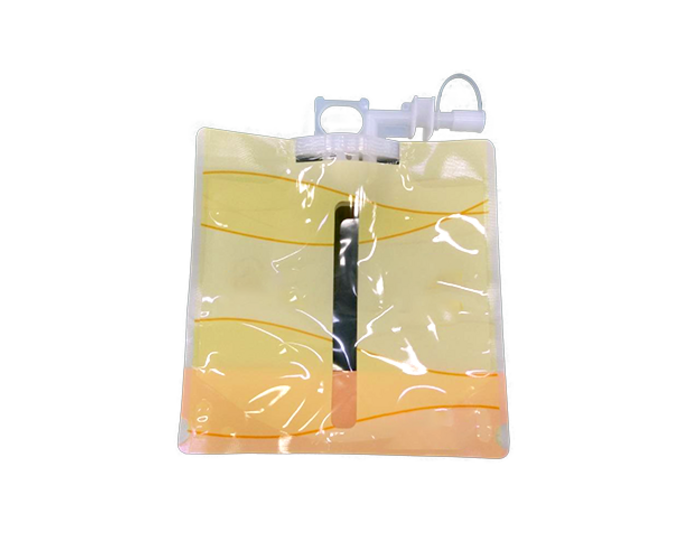
Medical Device Assembly | Disposable Liner & Canister Assembly in ISO 13485 Cleanroom
Medical suction systems require strict cleanliness and stable assembly to ensure safety in operating rooms and emergency care. SIMA Technology, located in Nakhon Ratchasima, Thailand, provides medical device assembly for Disposable Liner + Canister sets, essential components used in liquid-collection systems for hospitals and critical-care facilities. ⚠️ Challenges in Medical Device Assembly Many companies import finished products, which results in: - Limited quality control - Risks of leakage or loose assembly - Long international lead times - Difficulty handling design updates Moving the assembly to a certified cleanroom in Thailand helps improve quality, reduce risk, and shorten delivery time. 🔧 Components of a Suction System A complete set includes: - Disposable Liner (single-use soft bag from supplier) - Canister (hard-plastic container assembled in-house) - Valve / Connector / Filter Each interface must be assembled accurately, as even a minor leak can compromise safety in medical environments. 🔵 Cleanroom Assembly Process SIMA performs assembly in a dedicated medical cleanroom with the following process control: 1. Incoming inspection (visual + dimensional) 2. Liner-to-Canister assembly 3. Installation of valves, filters, connectors 4. Leakage-related and functional testing according to customer requirements 5. Packaging with barcode traceability This process supports both small-batch runs and full mass-production. 📑 Evidence / Certification - Cleanroom designed for medical device assembly - Leakage-related testing per customer specifications - Documentation and traceability under ISO 13485:2016 - Supports OEM export customers [1][2] 📌 Suitable Applications Ideal for medical manufacturers needing cleanroom outsourcing: - Operating-room suction systems - Suction units for respiratory use - Disposable liner systems for ICU / ER - Semi-assembly or full assembly based on OEM specifications ⚙️ Comparison — Importing FG vs Assembly in Thailand ❌ Importing Finished Goods - High cost - Limited QC - Long lead time - Difficult to implement design changes ✅ SIMA Assembly in Thailand - Better cost control - Cleanroom + ISO 13485 compliance - Faster delivery - Supports engineering change and test runs 🤝 Trust “According to Mr. Waranon – Expert Engineer at SIMA Technology, the assembly of Disposable Liner + Canister is carried out in a cleanroom operating under ISO 13485, with component inspection, controlled assembly steps, and functional testing based on customer specifications to ensure medical-grade reliability.” [1][2] 📞 Contact & More Information For technical details or project consultation, please contact our sales team or download additional information below. ーーーーーーーーーーーーーーーーーーーー ❓ FAQ Q1: Does SIMA manufacture the Disposable Liner bag? No. Liner bags are sourced from approved suppliers and assembled with the Canister in the cleanroom. Q2: Does SIMA perform leakage testing? Yes. Leakage-related tests are performed according to customer requirements. Q3: Do you support Full Assembly? Yes. Both Partial Assembly and Full Assembly are supported based on the customer’s specification. --- 🔗 Related Knowledge (Cluster Internal Link) • Knowledge Basic: • Knowledge Advance: --- 📚 Glossary - Disposable Liner: Single-use flexible bag component - Canister: Rigid container used with the liner - Cleanroom Assembly: Controlled-environment assembly process - ISO 13485: Medical Device Quality Management System - Functional Test: Operation-based performance verification - Traceability: Production tracking via coded identifiers Reference [1] Process Capability & Test Report – Medical Assembly Line (2025) — Internal Validation [2] ISO/EN 13485:2016 — International Organization for Standardization #MedicalDeviceAssembly #DisposableLiner #CanisterAssembly #CleanroomProduction #ISO13485 #SIMAtechnology #MedicalSuctionSystem #ThailandFactory #MuramotoGroup #MedicalOEM Updated: 2025-11-13
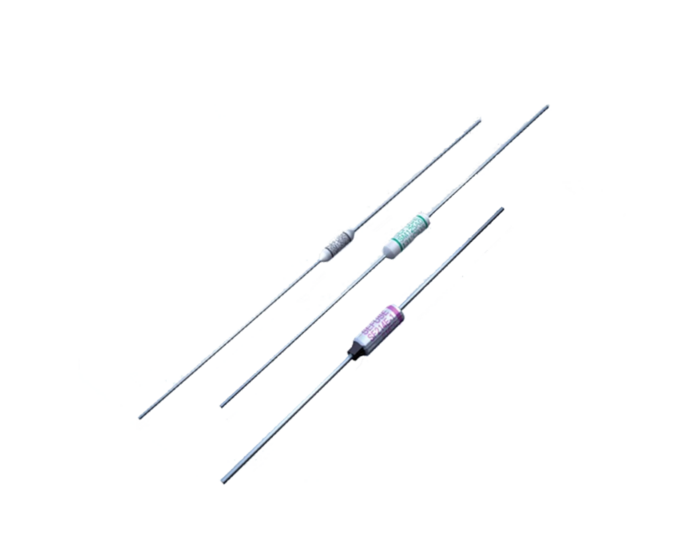
Thermal Fuse Technology | Overheat Protection for Appliances & Automotive
SIMA Technology provides thermal fuses in Thailand for home appliances, office equipment, and automotive systems—delivering reliable overheat protection. 🔷 Thermal Fuse Technology for Reliable Overheat Protection SIMA Technology Co., Ltd., headquartered in Nakhon Ratchasima, Thailand, manufactures thermal fuses designed to protect electrical and electronic systems from overheating. Working in collaboration with METCO Factory 1 (Bangkok), Factory 2 & 3 (Samut Prakan), we ensure efficient production, consistent quality, and fast delivery to customers both domestically and internationally. Thermal fuses automatically interrupt circuits when preset temperature thresholds are exceeded, preventing fire hazards and ensuring long-term device reliability. 🔷 Features ‐ Enhanced Safety: Automatically cuts off power during overheating, minimizing fire risks. ‐ High Reliability: Protects sensitive components and extends product lifespan. ‐ Customizable Ranges: Available for various temperature ratings to suit different devices. ‐ Cost-Effective: Simple, affordable, yet highly effective safety solution. 🔷 Applications ‐ Home Appliances: Coffee makers, microwaves, and hair dryers for overheat protection. ‐ Office Equipment: Motors in copiers and printers safeguarded against thermal damage. ‐ Automotive Systems: Electric seat motors, power window systems, and other vehicle electronics. 🔷 Geographical Advantage of SIMA With operations in Nakhon Ratchasima and strong support from the METCO production network, SIMA provides thermal fuse technology with global reach—delivering both quality and reliability to diverse industries. 📩 For more details, please contact us below or download the product PDF. ーーーーーーーーーーーーーーーーーーーーーーーーー 【Glossary】 ‐ Thermal Fuse: A one-time protection device that breaks a circuit when a preset temperature is exceeded. ‐ Thermal Cutoff (TCO): Another term for thermal fuses used in electronics and appliances. ‐ Overheat Protection: Safety mechanism preventing fires and thermal damage #ThermalFuse #ThermalCutoff #OverheatProtection #ThermalFuseSupplierThailand #AutomotiveThermalFuse #ApplianceSafety #SIMAtechnology #ThailandManufacturer (Updated: 2025-09-23)
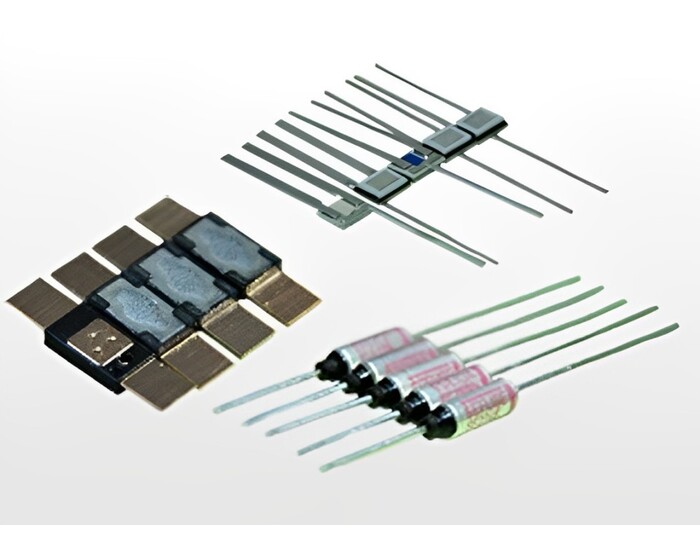
Thermal & Battery Fuses | Overheat and Overcharge Protection for Electronics
SIMA Technology provides thermal and battery fuses in Thailand for consumer electronics, industrial systems, and energy devices—offering reliable overheat and overcharge protection. 🔷 Thermal and Battery Fuse Technology for Electronic Safety SIMA Technology Co., Ltd., headquartered in Nakhon Ratchasima, Thailand, manufactures thermal and battery fuses designed to protect electronic devices from overheating, overcurrent, and overcharging. Our fuse technology enhances safety, reliability, and performance, serving industries from consumer electronics to industrial machinery and energy storage systems. With production support from METCO Factory 1 (Bangkok), Factory 2 & 3 (Samut Prakan), SIMA ensures fast delivery and consistent quality for both domestic and international clients. 🔷 Features 1. Overheat Protection (Thermal Fuses): Automatically disconnects circuits when a temperature threshold is exceeded. ‐ Models: SF (73℃–240℃), SFH (150℃–192℃), SM (98℃–260℃), Current: 1A–10A. 2. Overcharge & Overcurrent Protection (Battery Fuses): Prevents battery failures from overcharging, short circuits, or excess current. ‐ Models: D6S (2A–10A), D6 (2A–20A), SEREB (10A–60A), Voltage: 32V–60V. 3. Wide Range Capability: Flexible operating ranges to suit various applications. 4. Compact & Easy to Integrate: Small design ideal for modern electronics. 5. High Reliability: Long-lasting and stable protection for mission-critical devices. 🔷 Applications ‐ Consumer Electronics: Household appliances, smartphones, IT equipment. ‐ Industrial Equipment: Control systems, automation machinery. ‐ Energy Devices: Battery management systems, EV packs, renewable energy storage. 🔷 Strengths of SIMA Technology Co., Ltd. With a strong manufacturing base in Nakhon Ratchasima, Thailand, SIMA delivers thermal and battery fuse technology that meets global standards. Backed by Muramoto Group’s METCO factories, we provide efficient production, export-ready logistics, and trusted quality for international clients. 📩 For more details, please contact us below or download the product PDF. ーーーーーーーーーーーーーーーーーーーーーーーーー 【Glossary】 ‐ Thermal Fuse (Thermal Cutoff): A safety device that cuts electrical flow when preset temperatures are exceeded. ‐ Battery Fuse: A protective fuse that prevents overcharging, overcurrent, and short circuits in battery systems. ‐ Overheat Protection: Technology that prevents excessive heat buildup and fire risk. ‐ Overcharge Protection: Circuit safeguard that prevents battery swelling or damage from excessive charging. #ThermalFuseThailand #BatteryFuse #ThermalCutoff #OverheatProtection #OverchargeProtection #CircuitProtection #SIMAtechnology #ThailandManufacturer (Updated: 2025-09-23)
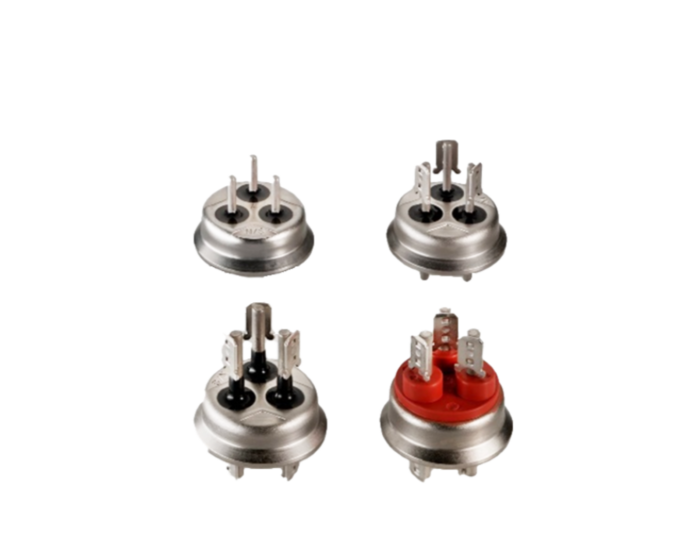
Hermetically Sealed Terminals | High-Reliability for Compressors & Automotive
SIMA Technology provides hermetically sealed terminals in Thailand for compressors, HDDs, and automotive electronics. Durable, waterproof, and dustproof. 🔷 Hermetically Sealed Terminals for Harsh Environments SIMA Technology Co., Ltd., headquartered in Nakhon Ratchasima, Thailand, manufactures high-quality hermetically sealed terminals engineered for use in high-temperature and high-humidity environments. These terminals ensure complete sealing against moisture, dust, and external contaminants, safeguarding critical components and enhancing the reliability, safety, and service life of machinery and systems across multiple industries. 🔷 Features ‐ Waterproof & Dustproof: Prevents damage caused by environmental exposure. ‐ Wide Temperature Tolerance: Effective in both extreme heat and cold. ‐ High Durability: Resistant to vibration, chemicals, and physical stress. ‐ Versatile Design: Suitable for cooling, data storage, and automotive electronics. ‐ Harsh Environment Adaptability: Maintains reliability under challenging conditions 🔷 Applications ● Cooling Systems: ‐ Usage: Refrigerators, air conditioners ‐ Role: Prevents refrigerant leakage and moisture intrusion ● Data Storage Devices: ‐ Usage: High-reliability hard disk drives (HDDs) ‐ Role: Protects sensitive components, ensuring data stability ● Automotive Electrical Systems ‐ Usage: Batteries, sensors, ECUs ‐ Role: Provides stable performance under vibration, heat, and humidity 🔷 Strengths of SIMA Technology Co., Ltd. With a production base in Nakhon Ratchasima, Thailand, and support from METCO Factory 1 (Bangkok), Factory 2 & 3 (Samut Prakan), SIMA provides hermetic sealing solutions trusted by domestic and international customers. Our hermetically sealed terminal technology is a critical enabler of machine reliability and safety, serving automotive, cooling, and electronics industries worldwide. 📩 For more details, please contact us below or download the product PDF. ーーーーーーーーーーーーーーーーーーーーーーーーー 【Glossary】 ‐ Hermetically Sealed Terminal: A connector completely sealed against moisture, dust, and contaminants. ‐ ECU (Electronic Control Unit): Automotive module requiring high reliability. ‐ HDD (Hard Disk Drive): Data storage device where hermetic sealing protects against contamination. #HermeticTerminal #SealedElectricalTerminal #CompressorTerminal #AutomotiveHermeticConnector #WaterproofTerminal #DustproofTerminal #SIMAtechnology #ThailandManufacturer (Updated: 2025-09-23)
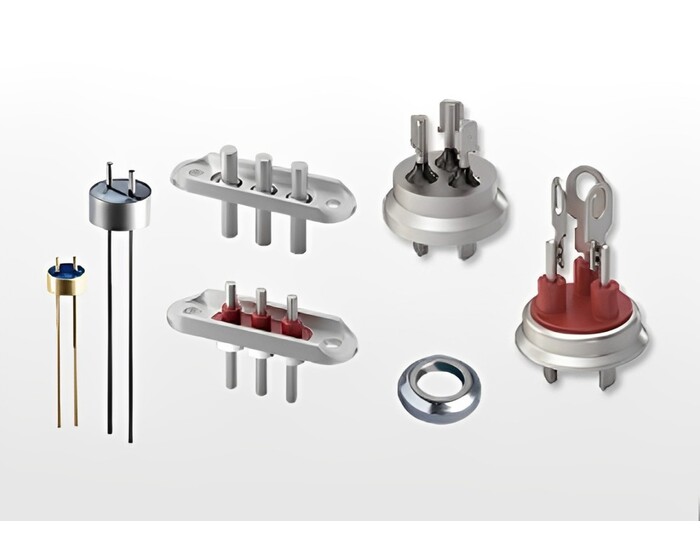
Glass-Metal Seal Technology | Hermetic Terminals for Refrigeration & Automotive
SIMA Technology offers glass-metal sealing technology in Thailand, providing hermetic compressor and automotive terminals with superior sealing, heat resistance, and durability. 🔷 Glass-Metal Sealing Technology for Demanding Applications SIMA Technology Co., Ltd., located in Nakhon Ratchasima, Thailand, manufactures high-quality glass-metal seal components for applications requiring hermetic sealing. Designed for compressor terminals and automotive systems, our sealing technology combines special glass and heat-resistant metals to ensure long-term reliability in extreme environments. Available in REF, Cylinder, and Automotive types, our seals help prevent leaks, resist corrosion, and simplify installation. 🔷 Features ‐ Superior Sealing Performance: Glass-to-metal bonding prevents leakage and contamination. ‐ High-Temperature Resistance: Stable operation from -50℃ to +250℃. ‐ Corrosion Resistance: Resistant to chemicals, moisture, and harsh environments. ‐ Versatile Options: Available in REF, Cylinder, and Automotive designs. ‐ Easy Installation: No special tools required, ensuring quick setup 🔷 Specification ‐ Types: REF, Cylinder, Automotive ‐ Materials: Special glass, high-grade heat-resistant metals ‐ Operating Temperature: -50℃ to +250℃ ‐ Pressure Tolerance: Up to 10MPa ‐ Custom Sizes: Available upon request 🔷 Applications ‐ Refrigeration Systems: Hermetic compressor terminals in refrigerators and air conditioners ‐ Automotive Industry: Engine components and critical electronic connectors ‐ Electronics: Industrial tools and precision instruments requiring hermetic sealing 🔷 Strengths of SIMA Technology Co., Ltd With headquarters in Nakhon Ratchasima, Thailand, SIMA provides glass-metal sealing solutions that meet global standards. Backed by the Muramoto Group production network (METCO Factory 1 in Bangkok, Factory 2 & 3 in Samut Prakan), we deliver high-quality sealing components for domestic and international clients. 📩 For more details, please contact us below or download the product PDF. ーーーーーーーーーーーーーーーーーーーーーーーーー 【Glossary】 ‐ Glass-Metal Seal: A component that bonds glass and metal to create a hermetic, leak-proof seal. ‐ Hermetic Terminal: A sealed connector preventing leakage in compressors and electronic devices. ‐ REF Type: Glass-metal seal for refrigeration equipment. ‐ Cylinder Type: Seal used in cylindrical terminal applications. #GlassMetalSeal #HermeticSeal #CompressorTerminal #AutomotiveSealing #RefrigerationSeal #MetalSealingTechnology #SIMAtechnology #ThailandManufacturer (Updated: 2025-09-23)
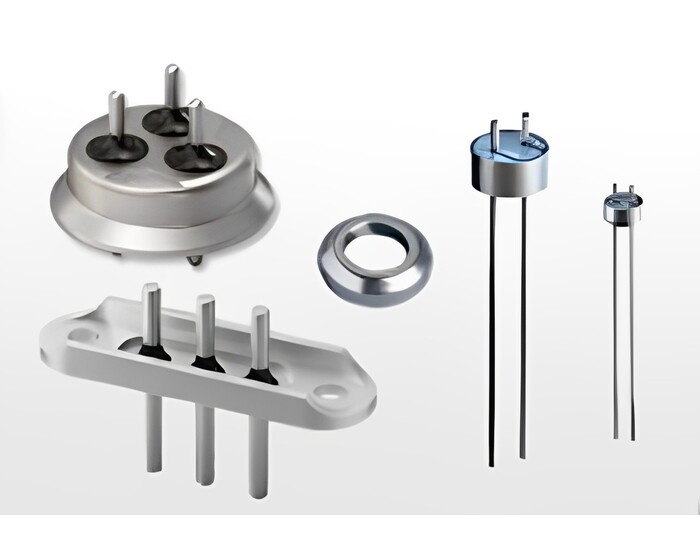
Electroplating & Electroless Plating Services| High-Quality Metal Coatings
SIMA Technology offers electroplating and electroless plating services in Thailand, providing nickel, gold, copper, and Pb-free coatings for automotive, electronics, and jewelry. 🔷 High-Quality Electroplating & Electroless Plating Services in Thailand SIMA Technology Co., Ltd., based in Nakhon Ratchasima, Thailand, delivers advanced metal plating solutions to enhance durability, conductivity, and aesthetics. We provide both electroless plating (nickel, gold) and electroplating services (nickel, gold, copper, lead, and lead-free), serving industries such as automotive, electronics, and jewelry manufacturing. Our plating technologies are tailored to meet strict performance and reliability requirements, ensuring long-lasting, high-quality finishes. 🔷 Features ● Electroless Plating ‐ Nickel: Excellent wear and corrosion resistance ‐ Gold: Superior conductivity with strong corrosion resistance ● Electroplating ‐ Nickel: High-strength coatings with reliable adhesion ‐ Gold: High-purity plating ensures contact reliability ‐ Copper: Superior electrical and thermal conductivity ‐ Lead (Pb): Traditional plating for wear resistance ‐ Lead-Free: Eco-friendly, RoHS-compliant alternative 🔷 Specifications ‐ Electroless Plating: Chemical deposition for uniform coatings on complex shapes ‐ Electroplating: Electrical current process for dense, adjustable coatings ‐ Finish Options: Nickel, gold, copper, lead, Pb-free ‐ Customization: Adjustable thickness to meet specific performance requirements 🔷 Applications ‐ Automotive Industry: Corrosion-resistant, durable metal coatings for high-performance parts ‐ Electronics: High-conductivity and reliable plating for precision electronic devices ‐ Jewelry & Decorative Uses: Aesthetic, durable, and premium-quality finishes 🔷 Strengths of SIMA Technology Co., Ltd. Located in Nakhon Ratchasima, Thailand, SIMA provides high-quality metal plating services with strong production support from METCO Factory 1 (Bangkok), Factory 2, and Factory 3 (Samut Prakan). Our integrated production network enables fast turnaround, export-ready solutions, and consistent quality. 📩 For more details, please contact us below or download the product PDF. ーーーーーーーーーーーーーーーーーーーーーーーーー 【Glossary】 ‐ Electroplating: Process of depositing a metal layer using electric current ‐ Electroless Plating: Chemical plating process that does not require electricity ‐ Pb-Free Plating: Environmentally friendly plating option that complies with RoHS standards ‐ Metal Finishing: Surface treatment that improves durability, conductivity, and aesthetics #ElectroplatingServiceThailand #ElectrolessPlating #NickelPlating #GoldPlatingSupplier #CopperPlating #PbFreePlating #MetalFinishingThailand #SIMAtechnology (Updated: 2025-09-23)
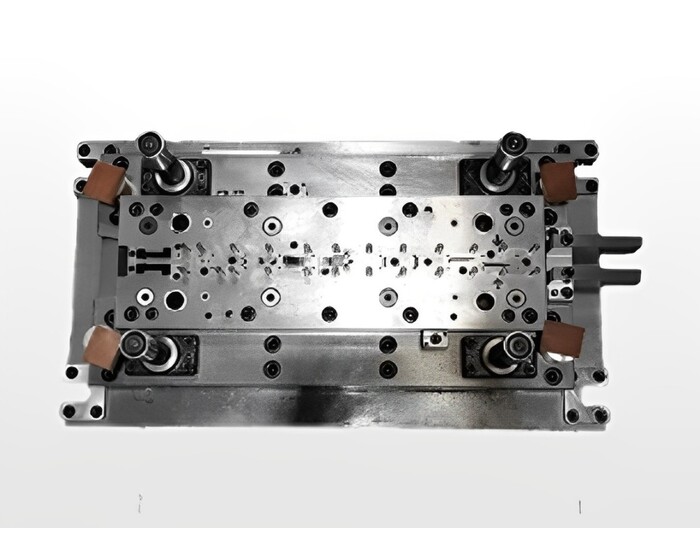
Mold Manufacturing Thailand | Precision Grinding, Milling & EDM Services
SIMA Technology provides precision mold manufacturing in Thailand, covering grinding, milling, EDM, wire cutting, lapping, and TAC SHIM with ISO-level quality. 🔷 High-Precision Mold Manufacturing Service in Thailand SIMA Technology Co., Ltd., based in Nakhon Ratchasima, Thailand, offers high-precision mold manufacturing services using advanced technologies such as grinding, milling, EDM, wire cutting, lapping, and TAC SHIM production. Our comprehensive process ensures accuracy, durability, and flexibility, supporting industries like automotive, electronics, and medical devices in both domestic and international markets. 🔷 Features ‐ Grinding: Produces smooth surfaces with high dimensional precision. ‐ Milling: Enables accurate manufacturing of complex mold geometries. ‐ Precision Grinding for Shoulder Punch: Specialized grinding for unique part shapes. ‐ EDM (Electrical Discharge Machining): Ideal for intricate and high-precision mold designs. ‐ Wire Cutting: Suitable for parts with complex details and fine tolerances. ‐ Lapping: Achieves ultra-smooth finishes for critical components. ‐ TAC SHIM Production: High-accuracy parts for precise gap adjustment. 🔷 Specifications ‐ Technologies: Grinding, milling, EDM, wire cutting, lapping, TAC SHIM ‐ Materials: Steel, aluminum, and synthetic materials ‐ Applications: Automotive spare parts, electronic components, medical device parts 🔷 SIMA’s Competitive Advantage ‐ Strategic location in Nakhon Ratchasima, Thailand ‐ Supported by METCO Factory 1 (Bangkok), Factory 2 & 3 (Samut Prakan) ‐ Trusted partner for precision mold manufacturing and exports ‐ Experience across OEM / ODM projects for multiple industries 📩 For more details, please contact us below or download the product PDF. ーーーーーーーーーーーーーーーーーーーーーーーーー 【Glossary】 ‐ EDM (Electrical Discharge Machining): Precision machining using electrical sparks ‐ TAC SHIM: High-accuracy shim parts for gap adjustment in molds ‐ Wire Cutting: Machining process using a wire electrode to cut complex parts ‐ Lapping: Finishing process for achieving ultra-smooth surfaces #MoldManufacturingThailand #PrecisionMold #EDMservice #WireCutting #TACSHIM #AutomotiveMold #ElectronicsMold #MedicalDeviceMold #SIMAtechnology #ThailandManufacturer (Updated: 2025-09-23)
CONTACT
Inquiry